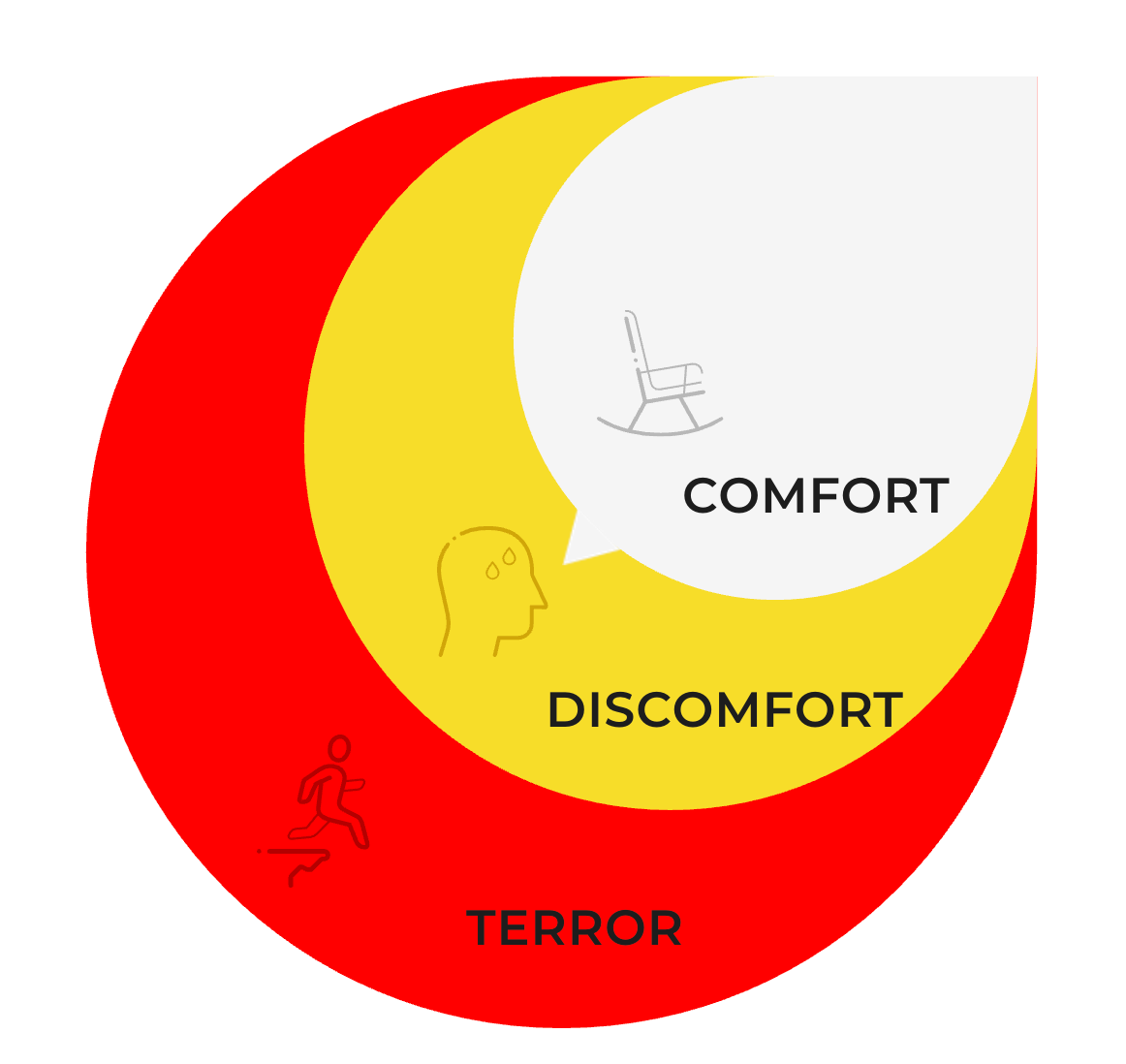I once told an employee in a 1-on-1 meeting that I didn’t think he’d put in his best effort on a project.
I thought the comment was innocuous, but this employee got so flustered that he stood up and walked out of the meeting.
Two hours later, I got a call from his boss. The employee insisted I was about to fire him because he did a bad job on the project. I had to explain that, no, I just felt he hadn’t put in his best effort. I figured I was being nice - I was saying I knew he could’ve done even better!
I had accidentally put him into the terror zone.
The terror zone is a place most managers are very sensitive about putting their employees in. Instead, when giving feedback, they default to the opposite extreme: keeping the employee squarely in the comfort zone.
But that doesn’t work either. You can’t be a good manager and just say the things that make employees comfortable (“Great job!” “You’re the best!” “Everything is fine!”).
In order for people to change their behavior, you must take them out of their comfort zone… without putting them in the terror zone.
The manager’s communication goal is thus to keep the employee in a positive Discomfort Zone.
As with much of a boss’s job, this is a balancing act. If you cocoon employees in comfort, they won’t grow. But if you scare the daylights out of them, you’ll trigger a threat response that prevents them from engaging productively. Once someone is in fight-or-flight mode, they’re too preoccupied to do good work.
Especially as you give employees corrective feedback, you want them lightly uncomfortable (“I don’t love hearing this…”) without being totally horrified (“… but it’s going to be OK”). Feedfoward helps a lot here.
Ready for that to get a bit more complicated?
Each of your employees has different markers for where comfort turns to discomfort and discomfort to terror.
If you’re talking to a military vet who has been screamed at by a drill sergeant, they aren’t going to be too fazed by your blunt feedback. Others could be shaken to their core by a bit of bluntness.
As you practice communicating with employees, you will learn the boundaries of their comfort, discomfort, and terror zones. You can then aim to push them into healthy discomfort, without letting terror kick in.




Great piece, Joel, and you're right, the terror zone is not productive. It can be a great zone to learn in, but it is pretty unforgiving, and most won't be able to handle it. Now, something interesting about that employee is how they handled it; it could still be a growth opportunity for them just as much as for you.